
20 years ago, Lee Noble set about perfecting the British sports car. We drive the machine he was confident enough to call a GTO, and meet the man himself. Words Sam Dawson. Photography Jonathan Fleetwood.
Ferrari-baiting Noble GTO driven. Noble Bloodline On the ragged edge in the last of the pure British sports cars – Noble’s M12 GTO
Noble Bloodline Clipping apexes in the Noble M12 GTO-3R: is it the ultimate evolution of the British sports car?
PLUS COVER Lee Noble on Lotus, and creating perfection with Ultima, Ascari and Noble
Is there any act more reckless, as an entrepreneurial engineer, than calling your new sports car ‘GTO’? Ferrari’s Gran Turismo Omologatos – in 250 or 288 form – have such capacious shoes to fill as icons of motor sport, physical design and driver’s-car prowess that it’s easier to fall flat on your face than succeed when you adopt the tag yourself. Pontiac just-about got away with it, Mitsubishi didn’t, and even Ferrari itself failed to recapture the magic with its own 599GTO, simply because it was merely inspired by the track version, rather than homologating it for competition.
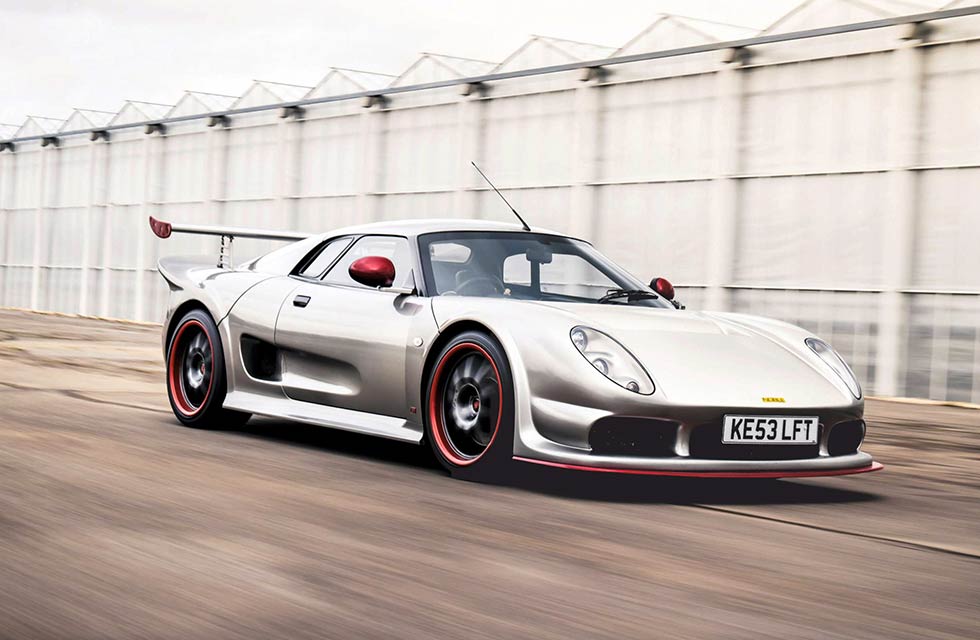
The car I’m driving today is a Noble M12 GTO-3R. It’s not a homologation special, nor does it break any particularly new technical ground. But as I soar between apexes on the tangle of hillside roads above Goodwood, the rapid-response steering tingling with information through its glovelike handgrips as the front tyres claw their way through each winding bend, the engine bay whooshing and fluttering with turbocharged energy and a sense of acceleration unencumbered by weight or drag, I’m very much reminded of Ferrari’s 288GTO. The ultimate tribute, then?
‘This is no small sports car – it out-accelerates its 288GTO namesake’
No, it’s far better than that. At a single turn lock-to-lock, the steering is far more intuitive than the surprisingly long-winded and heavy-feeling Ferrari’s for a start. And then there’s the confidence the Noble imbues when I accelerate and click my way through its five slick gears. When you push a Ferrari this hard on a public road, you’re reined in by a sense of financial terror; a mis-timed gearchange or misjudged corner entry can carry a five-figure bill. But in the Noble, that sense of awestruck liability isn’t there. Hinge back that big racer-style glassfibre clamshell at the rear and you’ll be greeted with a V6 as reassuringly familiar to Ford Mondeo owners as the Noble’s rear light clusters, albeit with some robust-looking additional plumbing for turbochargers.
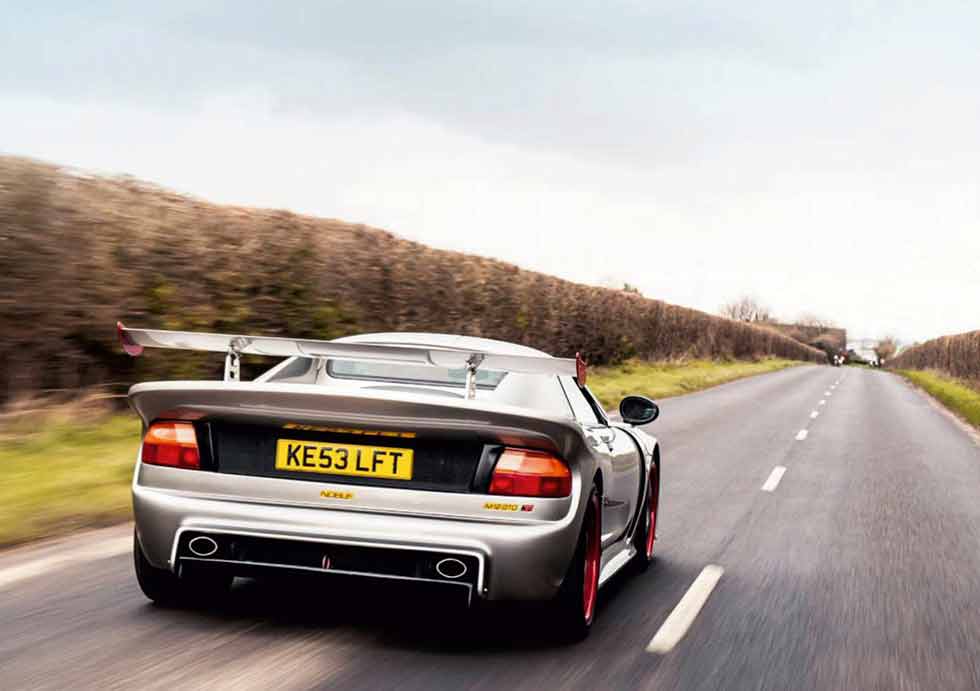
It’s transversely mounted too, rather than reworked longitudinally like a racer and bolted to something expensive from Hewland or ZF in the manner of the De Tomaso Pantera. Nothing’s offputtingly exotic – all the better to exploit as you might an MGF or an Elise. But look at its performance figures – top speed 165mph, 0-60 in 3.9 seconds, 0-100 in less than ten. This is no small sports car, it actually out-accelerates its 288 namesake. It’s a supercar.
‘I’m put in mind of video footage filmed in Eighties Group C cars’
But it’s a supercar of the old school – one of minimalist interiors, clamshell construction with all its oily bits on show underneath, no electronic driver aids, and weight-saving by aluminium rather than exotic carbon fibre. It’s a racer-with-numberplates engineering ethos that spiritually links the Noble to that older, purer strain of supercars that began with the Lamborghini Miura and Ferrari Berlinetta Boxer and seemed to end with the F40. That car, which was considered anachronistic in its own way when launched in 1987, its minimalistic construction at odds with the newer, more technically sophisticated and tangibly luxurious breed typified by the Testarossa and Porsche 959 which we’re still living with today.
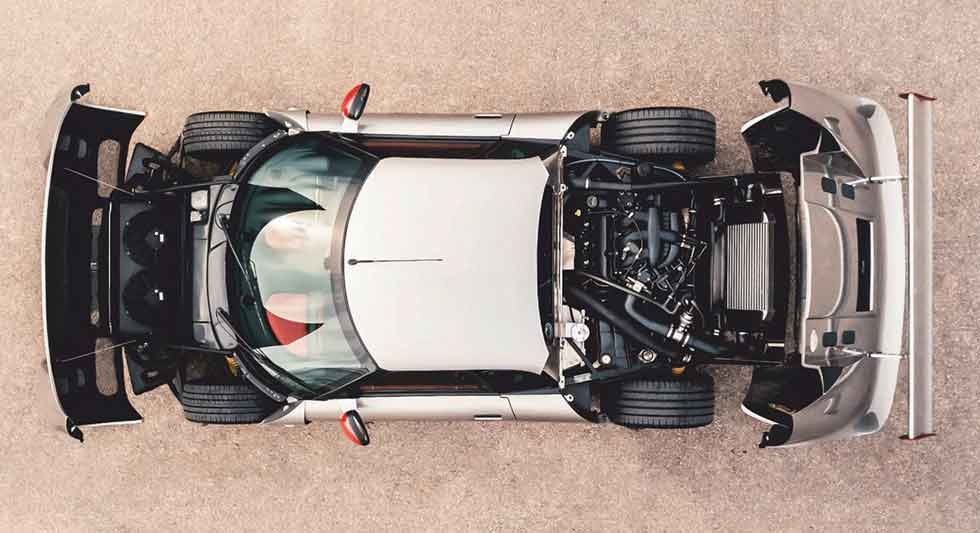
And yet the Noble marque is only 20 years old, the M12 just 18, and to compare it to these thirty-something Italian supercars would be to overlook the importance – and uniqueness – of what the British motor sport sector has to offer. There are very good reasons for the M12’s apparently old-fashioned values. In retrospect, the M12 is the absolute pinnacle of a kind of car and era of motoring that’s slowly, gradually slipping into the past as sports-car buyers opt for electronics-festooned, mass-produced German output, and hot-hatch power figures effortlessly eclipse those of Seventies supercars. It’s a time we’ll remember fondly in years to come, but for now doesn’t quite seem sufficiently long ago for us to feel its loss. But we will, and that alone makes the Noble M12 a classic worth celebrating.
‘A car like the M12 could only be born in a country with rural roads like Cat & Fiddle and Snake Pass’
Think back to the very early Nineties, and a depressive motoring press announcing an end to the power war that sired so many great Eighties sports-saloons and hot hatches. Recession, punitive emissions legislation and soaring insurance premiums seemed to sound the death knell for the performance car. And yet amid the gloom there was hope, in the form of the Mazda MX-5. This little Japanese roadster confined bragging about bhp to the yuppie era. Fun, not speed, was to be the mantra of the Nineties, and where Mazda led, nearly every mainstream rival followed.
Alongside the re-emergence of sports cars came the soaring popularity of the track day. Once the preserve of clubmen shaking down their sports specials following a bout of inter-race fettling, the idea of taking your sports car round racetracks, free from speed limits, suddenly boomed. Not surprising really – it seemed like a hedonistic, rave-like escape from motoring in Major’s Britain, with its Gatso cameras, Trafficmaster radio updates, speed humps, empty bus lanes and the Cones Hotline.
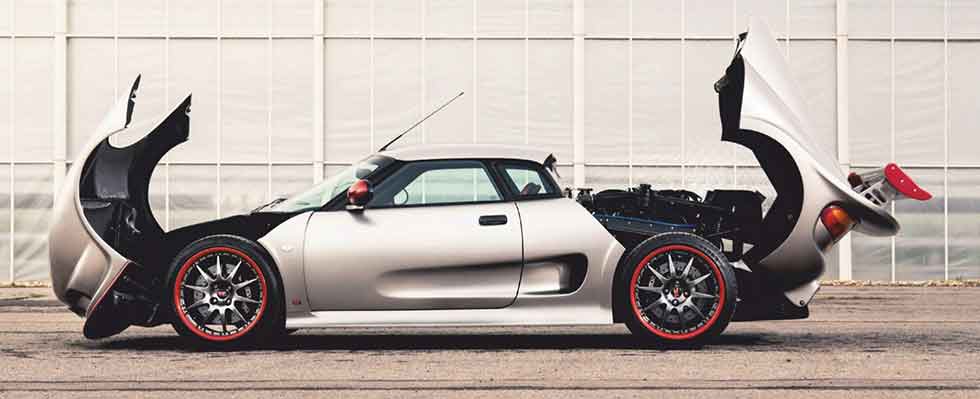
Against this backdrop, a more hardcore breed of dual-purpose track and road car flourished, and it’s into this culture that this Noble was born. It’s easy to picture a typical Nineties track-day nut nowadays – some youngish, rapidly-minted IT developer with heavily-reflective Oakley sunglasses and an Ibiza tan, bragging about ‘losing it in the wet at Brunters’ on a web forum. You can also picture their car. Basic MX-5s and MGFs weren’t fast enough. BMW Z3s and Mercedes-Benz SLKs were too soft and heavy. The answers were British, glassfibre-bodied and with motor sport credibility picked up via production-based GT classes or brutal one-make race series. Think TVR, Caterham, Lotus, Marcos – and Noble.
With this in mind, back on the road in the GTO, I’m having to force myself to ignore the blatant Ferrari comparisons my brain is trying to make. The aesthetics of the M12 are almost those of a Nineties GT1-class endurance-racer; the extended wheelarches, gouges carved by air scoops and extractor vents, and that vast rear wing on its spindly adjustable pylons all typical of additions made to underlying purer, simpler sports cars – think Lotus Elise GT1.
There’s a good reason for that. The M12’s evolutions sprout from the underlying M10 of 1999, Lee Noble’s first pure road car released under his own name after 20 years of designing racers. This comically aggressive-looking roadster garnered Elise-beating reviews from every journalist who drove it, but even Noble himself isn’t complimentary about its angry styling nowadays. The M12’s hardtop and racer-style wings and arches might not be design-house pretty, but they are dramatic and purposeful, and also serve to disguise the weird-looking M10 completely.
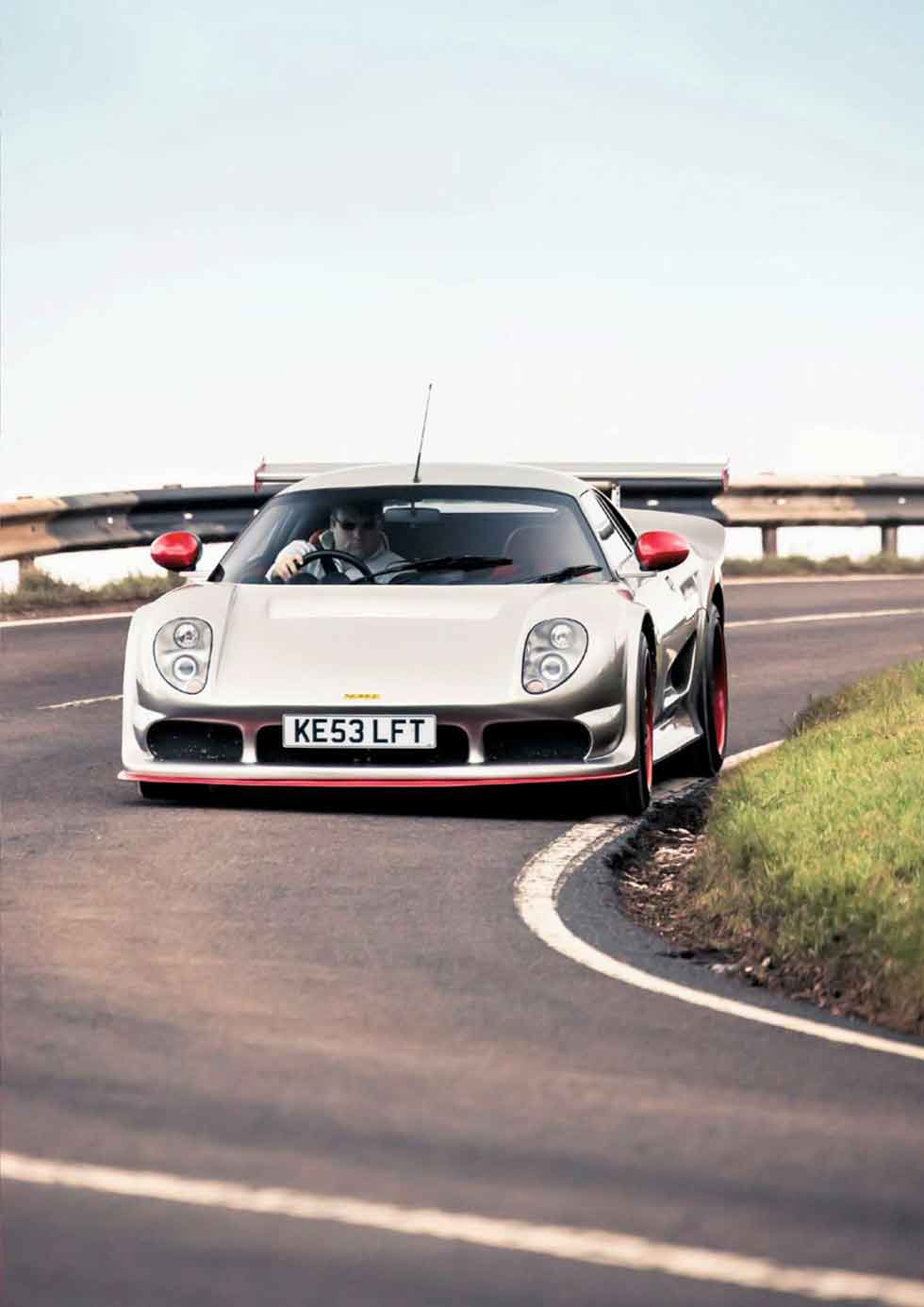
It feels compact on the road, the civilised-racer theme reinforced by the visible roll-bar running the width of the windscreen, from which the sunvisors unusually fold back towards you. There’s a deep curve to the windscreen, and the abundance of alcantara-like suede puts me in mind of video footage filmed in the cockpits of Eighties Group C cars.
And yet ‘3R’ stands for ‘Three-Litre Road’. All-round visibility, often a weakness in mid-engined cars, is superb on account of the Noble’s shallow-buttressed notchback, rather than a more typical glazed-fastback shape. The ride is jiggly, but not harsh, the edge taken off the hard, thin seats by a layer of soft quilted leather, and the driving position is faultless, with arms and legs straight out, no wheelarch intrusion and a combination of very long seat runners and a deeply domed roof so even the loftiest can get comfortable.
Blipping the throttle at idle, the hollow snort of the engine reminds me of another British twin-turbo V6 – the one in the Jaguar XJ220. But that car’s Group C origins harm its usability, with yawning turbo-lag, an inability to cope with stop-start traffic without cooking its clutch, and marathon gearing better suited to the Mulsanne Straight than a country-lane blast.
No such bother in the Noble. It’ll crawl off the line as docile as a Mondeo if you want it to, with plenty of low-down torque for a smoothly boosted getaway. It’s helped by that lovely gearchange – there’s still a firm sensation of solid metal components shifting around beneath my left elbow, yet it comes with the quick economy of movement you’d expect of a Toyota MR2 or Mazda MX-5.
In this sense, the Noble seems to be performing a similar trick to the De Tomaso Pantera, offering supercar pace with Fordsaloon dependability thanks to a big but mechanic-friendly engine installed in a flyweight mid-engined sports car. But being built in Ford’s Cleveland, Ohio factory is the only thing the Noble’s Duratec V6 engine has in common with the Pantera’s old iron 5.8-litre V8. It’s mass-market but as sophisticated as an older generation of racing engines – all-aluminium, quad-overhead camshafts, and sequential fuel injection. Cosworth directed its specification, and its architecture informed its design of the 6.0-litre Aston Martin V12.
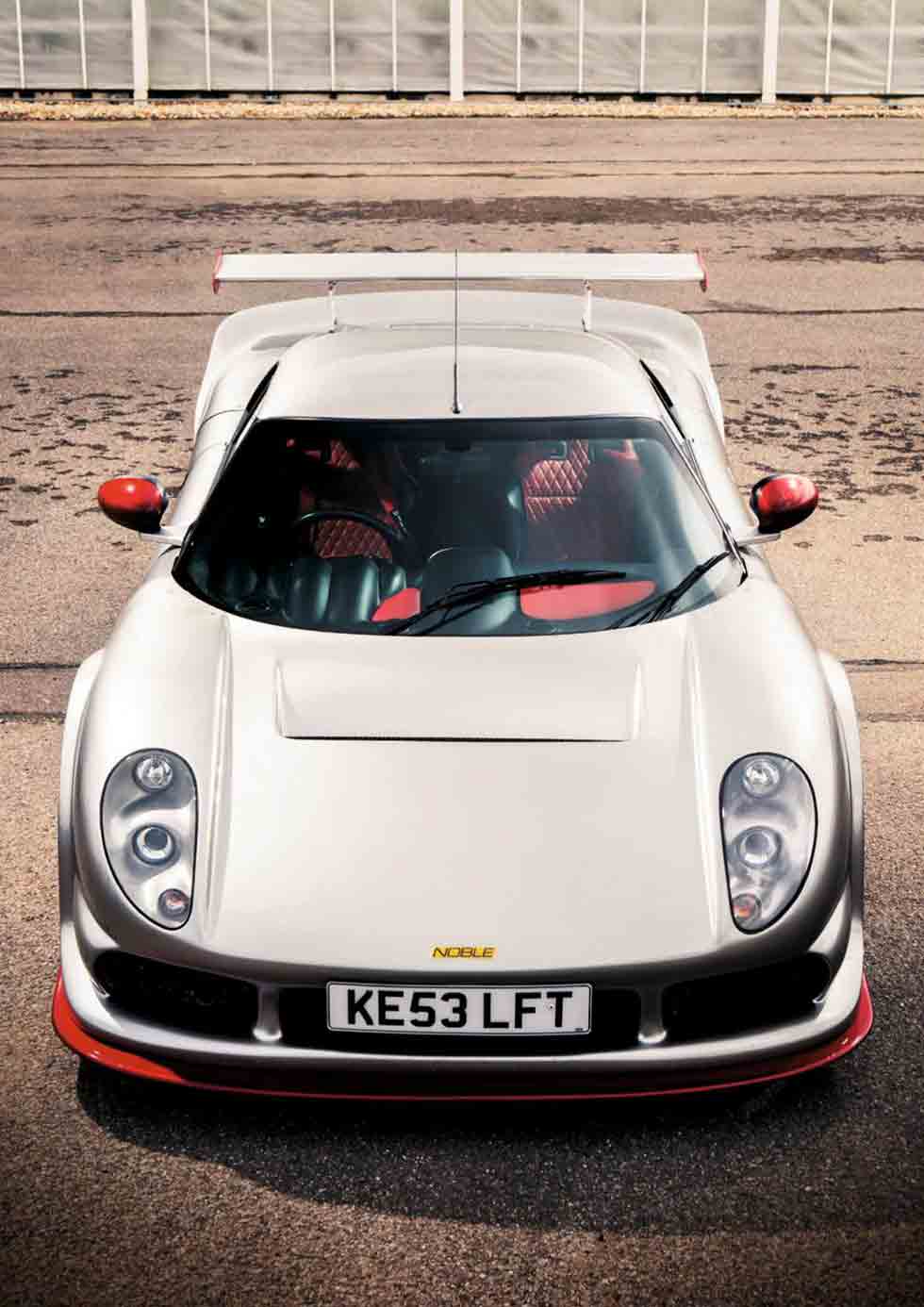
The twin turbochargers wake up properly – again, smoothly, with no laggy judder – at 4000rpm, slingshotting the Noble into the physically-affecting behaviour only a true supercar can muster, making the landscape pass so rapidly that the scope of my eyes’ focus noticeably narrows, blurring the edges of my field of vision.
And yet it’s still perfectly manageable. The car feels straightforward to place on the road – I can see all its extremities easily via the expansive glass and big mirrors – and the brakes, even though they lack an anti-lock system, are communicative and powerful.
Remarkably for a car with such a pliant ride, there’s hardly any sensation of roll or weight transfer in corners. With a wheel at each corner of the chassis, each suspended Dallara-style on a compact short-travel double-wishbone unit in the manner of a Lamborghini Countach, and with some of the suspension’s jolt-absorption role taken up by the surprisingly comfortable seats, once you learn to trust in the tyres’ grip, fast corners can be taken with incredible precision. With that one-turn-lock-to-lock steering and the knowledge that the front wings’s curves follow the line and location of the wheels, you can pilot the M12 almost as you might a single-seater. It’s hard to think of another road car of this era that tucks in so immediately, with every millimetric adjustment of the wheel translating into something meaningful on the road.
Ferraris and Porsches may outperform cars like the Noble, and they may even handle well, but never this well. Hurtling around the Nürburgring in search of a meaningless class lap record is one thing, but a car like the M12 can only be born in a country with rural roads like Derbyshire’s Cat & Fiddle or Yorkshire’s Snake Pass, or on circuits with corners like Mallory Park’s Devil’s Elbow or Cadwell’s Gooseneck; sudden, blind, rapid kinks of tarmac with walls that could hide anything from a tractor to a wayward spinning Caterham beyond their truncated vanishing point.
You need a compact, close-fitting car that delivers accelerative and braking power in short, decisive sledgehammer bursts and changes direction as suddenly as an aerobatics plane. In this sense, the Noble makes 911s feel clumsy.
Unlike Italian supercars or American muscle, where the engine is the beating heart of the car and the thing that gives it personality, the true essence of a British sports car is in its chassis design. It’s the bit of the car which reads our roads like a finger across a Braille page and sends the information through our synapses just as immediately. It’s an inherently analogue process that electronics only ever corrupt.
Chassis design is an art of which the British should be as proud as the Italians are of their engines. Racing teams from all over the world flock to the UK in search of our thoroughbred chassis expertise to contest almost any given series. We may self-deprecate, and romanticise other countries’ industries, but in truth the likes of Enzo Ferrari and Ferdinand Porsche were no less ‘men in sheds’ than Colin Chapman and Bruce McLaren. And Lee Noble? The man who devised the Group C-style Ultima, banned from club competition for being too successful, whose chassis proved instrumental in the creation of the McLaren F1, and whose involvement in a project usually results in a race-winner? He ought to be held in the same esteem. A drive in an M12 proves it – no car, not even a Lotus, is better suited to a British road than this.
Thanks to Targa Florio Cars (targafloriocars. com), where this Noble M12 GTO-3R is for sale at £48,000.
2003 Noble M12 GTO-3R
Engine 2968cc transverse V6, dohc per bank, Ford SFI Multipoint electronic fuel injection, two Garrett T25 turbochargers
Max Power 352bhp @ 6200rpm
Max Torque 350lb ft @ 5000rpm
Transmission Six-speed manual, rear-wheel drive
Steering power-assisted rack-and-pinion
Suspension Front and rear: independent, double wishbones, coil springs, telescopic dampers, anti-roll bar
Brakes Servo-assisted vented discs front and rear
Weight 1080kg (2381lb)
Performance Top speed: 165mph;
0-60mph: 3.9sec
Fuel consumption 30mpg
Cost new £58,850
Asking price £48,000
The Noble M12 GTO-3R has long enjoyed a cult following. But two decades on, should it be regarded as a national treasure?
Exotic bodywork envelops humble but effective mechanicals; clamshell design was taken from Lee Noble’s experience developing racers.
Top left: steering is one turn lock-to-lock
Middle left: rear wing is adjustable with a spanner
Bottom left: handbrake inadvertently forms an armrest
Above: Sam demonstrates the GTO’s cornering precision.
Above: 3R evolution of the M12 GTO brought facelifted headlights
Top right: engines require no specialist knowledge to service;
Middle right: ergonomics are exceptional for a low-volume car Bottom right: vibrant colour scheme was special request to the factory.
Behind the GTO-3Rs handling prowess is a steel-tubed, aluminium tub chassis that we self-deprecating Brits should be proud of.
OWNING AN M12 GTO-3R
‘I’ve had it since November 2010 and it’s been fantastic,’ says Martin Gibson of his Noble M12 GTO-3R. ‘It’s technically for sale, but even then I’m in two minds because I can’t help myself driving it, but it’ll have to go eventually.
‘It’s been great to own – not only is it properly fast, it’s also genuinely cheap to run. It’s only broken down once, when a starter motor went, but it was easily bump-started and fixed with a Mondeo part by a local mechanic. It’s simple to live with, all Ford-based and off-the-shelf and a lot of owners service them themselves. Nothing really rusts on them either – although you’ve got to keep an eye on the powdercoating on the chassis legs near the suspension mountings – and even driven hard it doesn’t seem to drop below 20mpg.
‘Before buying it, my wife and I considered a Lotus Exige, but they’re too difficult to get in and out of by comparison, and taking one on a long drive from Cardiff I had to keep stopping to get out and ease my back – the ride also made me feel like I needed a gumshield! The Noble on the other hand is supple, not harsh, and capable of 150-mile-plus drives with ease. And yet on track it’s beautifully precise too. I’ve driven it on the Silverstone GP circuit and its limits were far higher than mine. You’ve got to be careful putting your foot down in the wet as it’ll happily snap sideways, but otherwise I just can’t fault it.’
Martin still finds the GTO-3R gripping after eight years of ownership.
Lee Noble Interview
‘I thought, I could do this so much better’ With the M12, Lee Noble may have created perfection, but where did his ideas come from? We join him in his studio and uncover the untold recent history of the British sports car. Words Sam Dawson. Photography Alex Tapley.
It’s partly the fault of cars like this Scimitar,’ says Lee Noble, gesturing to his latest classic restoration project sat on axle stands outside the design-studio-cum-workshop in his back garden. He has the genial, down-to-earth demeanour of a perpetually-engaged hobbyist, rather than a stereotypically aloof car designer, and yet the various outlandish mid-engined machines that lurk behind garage doors and inside car transporters – an Ascari Ecosse here, a Noble M400 there – attest to a man whose abilities and vision vastly outstrip those of your typical classic-car tinkerer. And yet a rough-looking Scimitar GTE sums up his ethos. Why?
‘It all started back in the Seventies, when I restored classic cars for a living,’ Noble explains as he settles in his studio, surrounded by technical drawings of chassis. ‘I worked on everything from MGs to Maseratis, although in those days they were just nice old cars, relatively inexpensive.
‘I had a Scimitar GTE back then, partly because I love the idea of a uniquely British sports car. The Scimitar was an interesting experiment that fell to bits on a regular basis, but I liked it, and also felt I could have designed something so much better.
‘One of my clients was a doctor who had a Triumph TR6. He told me he was doing the Curborough Sprint and invited me along with my Scimitar. Unfortunately it was pissing down with rain – the Scimitar was an automatic, and got stuck in the mud. The doctor said, “Fancy a go in the TR6? You bend it, you mend it…” I ended up winning the sprint!’ From that moment a desire to race cars as well as build them began.
‘Someone had given me a Jensen-Healey, which I didn’t want, but I thought it could make for a good racer what with its Lotus twin-cam engine, so I put glassfibre wings on it and took it racing in the 750 Motor Club. It was rubbish, and I spent the race chasing an MG Midget. It was a waste of time, but the guy who won that race had a JPS-liveried Europa that I fell in love with. Another chap at the race said “I know of one for sale, but it’s in bits.” I did a deal on it, rebuilt it, I had my first proper plastic British sports car – and I started winning.
‘Everything I’ve done since has stemmed from that Europa. People started associating me with it, and I ended up specialising in Lotus. I restored an Esprit for a local woman, and as I took it apart I could tell that this road car came from a man – Colin Chapman – who was a pure racer at heart. This made it very fragile, and I thought, I could do this so much better. So I sold the Europa and decided to build my own car in my father’s garage, with very little money. That was the Ultima.’
Noble nods in the direction of the photo on the wall of that first Ultima parked alongside a then contemporary Porsche 962. They look like Group C rivals, and yet the Ultima was designed as a club-level racer. ‘Back then, you could get some fairly decent engines and gearboxes out of rotten cars – Porsches and Renaults were best for mid-engined use,’ says Noble. ‘The Renault’s gearbox was very nice to use – and of course the Europa had one too.
I got one for that first Ultima for £30! Group C was my main inspiration at the time, and it was a great era in motor sport, because it was at a point where you didn’t need major manufacturer involvement to build a competitive car. Cosworth DFV engines, for example, were available off the shelf.
‘I wasn’t looking to build a Group C car, but its influence meant the Ultima was the only decent car on the 750MC grid, and it cleaned up. But in order to make money, I had to make it available as a kit. The MkIII evolution was very successful, but I ended up being too busy building them to race them.’
It was at this time – 1990 – that an unexpected meeting occurred. ‘Two chaps turned up at our little factory one day, saying they’d heard about the Ultima’s chassis and wanted to order a couple of them. I didn’t know who they were, and it was only once they put their details down and said they were from McLaren that I realised they were Ron Dennis and Gordon Murray. The two Ultimas they bought were used as test-beds for various parts of the McLaren F1.’
This brush with greatness led to the next evolution in Noble’s cars. ‘The F1 came out in 1992, and I decided to build the Ascari because I realised there was a market for that kind of supercar. I wanted something that was more roadworthy than an Ultima, but it turns out developing a decent road car is bastard expensive!’ – this brings Noble on to a recurring issue of the British specialist sports car scene that he’s struggled against repeatedly: affordability, and the intrusive involvement of wealthy investors.
‘I needed more money to develop the Ascari, so too many people got involved. But the problem with building supercars is that it’s seen as toy-time for rich people. They just want to play, and have no idea about the reality of the business involved. Some of them think it’ll make them millions, and will end up with a car that’s too expensive with the wrong badge attached to it, that no-one buys. And so I sold Ascari. It was the same story with Noble later on, too.
‘I decided there must be a market for a nice affordable open road car, so I designed the Noble M10. While I was building it, there were all sorts of rumours going around regarding Lotus doing something similar, and this turned out to be the Elise, which was fine but I figured it could do with more power. The M10 had a Ford Mondeo V6, and everyone who drove it said it was better than the Lotus, but it was a very hard sell. I was up against major players and the M10 didn’t look good enough. I wanted to build something quicker. Once again, I needed money.
‘And then I got a phone call, out of the blue, “Roger Clark here”,’ Noble says, mimicking the two-time RAC Rally winner while facially recalling his own surprise. “I’ve been looking at your car in the press – I’m at the pub, could you pick me up in it?” – he was hammered and wanted a lift! And yet, when I got there, it turned out he wanted a test-drive. I was reluctant but we needed finance, so I let him drive it. He was pissed, but still a very good driver even then. He never went over the speed limit, but he never slowed down either, and his car control was incredible.
‘He introduced me to Tony Moy, a brilliant businessman, and we set up Noble Moy Automotive, but it was clear the M10 wasn’t going to be a success.’ Noble takes out an old photo of a red M10 he’d drawn over with a ballpoint pen back in 1999. ‘We took the development car and made it look nicer. The M12 is basically the M10 with a hardtop on and a bit of filler here and there. The chassis is identical, only with bigger brakes, but the M10 only had 180bhp.
We realised the M12 needed more power, because of where it would fit in the market. At one end you had the Lotus Elise at £24k, at the other end the Esprit V8 at £70k, and TVR hovering between with a reputation for unreliability. You can only sell a product for what it’s worth, and it needed more than 180bhp to be a Porsche-eater. We had to do things differently, more reliably than TVR, but how do we get more power from a Ford V6? ‘Pete Thorpe, my contact at Cosworth, said bolting on turbochargers wasn’t as easy as it sounded, but we fitted two to that Mondeo 2.5 and got 300bhp – not many cars had that kind of power in 1999.
‘I’m self-taught, but I think with engineering you’ve either got it or you haven’t, and the cachet of having your name on things comes through your hard work, putting in the hours. But with car design the biggest thing is having a feel for driving – is the steering wheel in the right place? Can we improve the NVH [Noise, Vibration & Harshness]? What’s acceptable to someone spending £50k? Specialist car builders back then were very bad at addressing things like this.
‘We launched the 2.5-litre M12 in 2000 and sold 200-odd, then Ford Power Products got involved, wanting to sell us lots of engines. We got invited to events all over the world by Ford, to the point where it started to wind me up, and then suddenly they dropped the 2.5 and didn’t tell us. We only had 40 engines left, and five years-worth of orders to fulfil – we had to outsource building the M12 to High Tech Automotive in South Africa to meet demand.
‘I asked Ford what they were going to do, and they told me they were bringing out a new 3.0-litre, but the architecture of the engine was totally different and I ended up having to throw so many bits away that I renamed the car to reflect it: GTO-3, for 3.0-litre.’
And GTO? ‘If you’re confident enough, you want to make a statement and go for it. The thing with this project was, the timing was just right – there was nothing else like it in its price bracket. And the 3 and 3R sold very well. At the 2004 British Motor Show we had a massive stand, including the GTC convertible and M14 supercar prototypes. We were flying high. The M12 was the right car at exactly the right time. ‘And then Ford said it was planning to do a six-speed Mondeo, and that it could provide gearboxes to us too.
I announced the six-speed option, then Ford said it couldn’t supply them for another six months. I had to convince customers to accept the five-speed with the promise of a later upgrade, but cars without gearboxes were piling up in the factory, That’s why the GTC and M14 didn’t get built in the end.
‘In hindsight I should’ve left things alone, but in a moment of stupidity I made the M400. We’d wanted to make a racing version – we’d raced the M12 successfully in the Britcar 24 Hours – but it cost more, we were making fewer, and the world was moving on. Porsche released its various GT models and its prices were in our zone – and a well-heeled businessman wants a car with Porsche’s name on it.
‘In response I built the M15 with its V6 in-line rather than transverse, and electric-everything in the interior. We received 80 orders off the back of a single appearance on Top Gear. But we needed money – £2m, upfront, for seven people in an industrial unit in Barwell. And Moy left the company.
‘So I looked at our customer base, and found Peter Dyson, who promised me the moon. We had the deposits, and the tooling ready to go, then Dyson pulled out, saying “I don’t like the car, cut it up, I can do what I like, I want to put a V8 in it.”
‘I knew the writing was on the wall, so I left. What the company had been was over. The whole point of Noble was to make affordable performance cars. And people spending over £200k on a British sports car don’t want a tube-framed thing with a Volvo engine, they want a McLaren.
Noble is downbeat about the prospect of a British sports car in the mould of the M12 returning. ‘The Noble was the car you dreamed of when you were young – something with 300bhp. But today you can get a Ford Mondeo with that kind of power and torque, and you can buy a Peugeot 208 with incredible abilities for even less. If you built a low-volume sports car you’d find yourself competing with the likes of BMW and Audi. I drove a TT Quattro once, and to do something comparable to that I’d need ten times the money I spent developing the M12.’
And yet, there is a glimmer of a future direction. ‘Track day cars are the way forward for the British sports car,’ he says. ‘The market is the right size in terms of volume, and they don’t need leather-trimmed refinement – look at the Ariel Atom! The essence of a British sports car is one that works on British roads and racetracks. So long as there’s an appetite for motor sport, there’s hope.’
‘The cachet of having your name on things is earned through your hard work’
Above: memories of building the M10 prototype; Noble himself is first to point out its stylistic shortcomings. Noble still finds time indulge in his gateway drug: old-car tinkering. Another of his current projects is rebuilding the first Ascari Ecosse. The M12 prototype (silver) meets one of the first customer cars.
Lee Noble’s office is a modest lean-to built on the side of his workshop …yet his homespun methodology is clearly effective, as shown by this second-lap photo of rampant Ultimas at Donington Noble drew the M12’s styling revisions in ballpoint pen on photos of the M10… The M12 GTO incorporated elements of this BritCar 24 Hours endurance racer.
Lee Noble is the man behind some of Britain’s best small-volume sports cars, and is entirely self-taught.
‘Two chaps visited us to buy some chassis. Gordon Murray and Ron Dennis’






